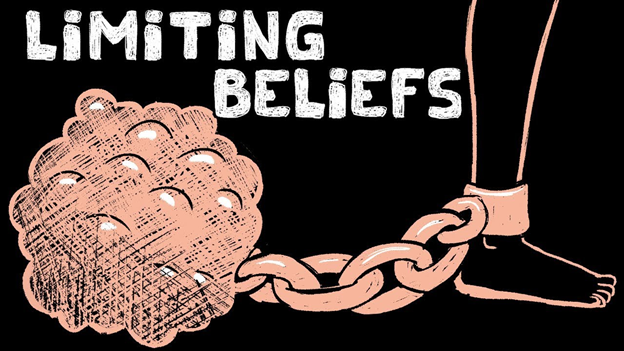The people who seek counselling services, from mild to severe cases, usually report troubling symptoms in the domains of thoughts, feelings and behaviours. For instance, in cases of depression, a patient would say they are sad most of the time with thoughts of harming themselves and avoiding social contact. The pain they experience motivates them to seek professional help to restore their function.
In therapy, psychologists assist patients to identify, understand, connect and resolve whatever difficulties they are experiencing. One of the most effective ways to help patients achieve control over their thoughts, feelings and behaviours is through Cognitive Behavioural Therapy (CBT). This approach is based on the understanding that thoughts, feelings and actions are interconnected. Undesirable thoughts and the emotional state of the mind can capture one in a vicious cycle of unstable mental state CBT helps explain how stress, depression and other emotional disturbances occur. CBT aims to help one to deal with devastating difficulties in a more constructive way by breaking them down into smaller parts that can be manageable by a person.
The link between thoughts, feelings and behaviours
What makes us react to situations the way we do? The answer seems straightforward. Events are responsible for the way we react emotionally and behaviourally. However, according to psychologists our thoughts and beliefs bear the blame for our responses. The meaning, interpretation and conclusions we assign to situations, people or things complete the equation of our responses. For instance, when a person experiences anger or depression, these stressors can be exaggerated by biased ways of thinking, or erroneous beliefs. Irrational beliefs and thoughts create pain and self-defeating attitudes and behaviours. This means that our emotions and behaviours receive command from our thoughts before executing orders.
Sources of thoughts:
But where do our thoughts come from? Our thoughts affect our daily choices of what to wear, what to eat or drink, whom to call. It is important to understand what influences our thoughts. Everyday thousands of thoughts cross our minds. And on the surface of it may seem that these thoughts are our own. The fact is that a big percentage of our thoughts come from the unconscious mind and that these thoughts are not always our own. Sometimes thoughts are inserted in our mind.
As electrical impulses in our brains, our thoughts are influenced by our senses, the books we read, conversations we have, movies we watch and experiences in our lives. Our thoughts shapes our beliefs and values, triggers our feelings and moulds our behaviours.
Core beliefs and worldwide view
Core beliefs are established from early experiences in our childhood and are usually deeply rooted and rigid. New experiences are sieved through these beliefs thereby reinforcing a given worldview. The worldview that an individual carries determines the way they interpret their experiences in life. When the core belief is irrational it leads to errors in thinking that are usually limiting and maladaptive. This leads to distorted reality that negatively influences mood and behaviour. The individual is caught up in a downward spiral of automatic negative thought patterns that he/she is incapable of challenging or stopping. These automatic thoughts make one to have a negative view of self, the world and the future.
Negative view of the self
A negative view of self causes the individual to understand him/herself as inherently inadequate, unintelligent or incapable. He or she attributes unpleasant experiences or events to personal inadequacies. This leads to self-criticism and feelings of worthlessness and often the individual starts to believe that they will never be happy or satisfied.
Negative view of the world
A negative view of the world leads an individual to believe that the world presents obstacles that are too difficult to overcome and makes impossible demands that he/she is unable to fulfil. As a result, even minor experiences may be interpreted as adverse or threatening.
Negative view of the future
A negative view of the future results in the individual believing that any current difficulties being experienced will continue forever or that the future only has hardship and frustration and that any task undertaken will only result in failure. This can lead to depression, anxiety, suicidal thoughts and attempts and a host of other stresses for the individual.
Challenging beliefs, thoughts and conclusions
Through therapy, one can learn to challenge erroneous thoughts. The first step involves paying attention to thought patterns one has. Second is to identify irrational or erroneous thoughts and beliefs and thirdly challenge them by looking for evidence and applying logic. This can be done by asking 5 simple questions;
- Are my thoughts or beliefs accurate?
- Are my thoughts helpful/healthy?
- Am I falling into a thinking trap? If so which one?
- What could I say to myself that would be more accurate, positive and healthy?
- How would I feel if I told myself this?
These simple steps can be used by anyone who is not necessarily experiencing distress but seeks to improve his or her life by improving the quality of his/her thoughts and interrogating what they believe. This can make one envision an alternate reality in which an individual can begin to reimagine their life or situation that is open to new sources of wisdom.
In the end to be able to control our thoughts and emotions and behaviours, to become all that we were meant to be and exercise our free will require that we develop some quality of independence and critical thinking.

References
- A. Hassiotis, 2012. Manual of Cognitive Behaviour Therapy for People with Mild Learning Disabilities and Common Mental Disorders © Camden & Islington NHS Foundation Trust and University College London
- Herbert, 2005. Thinking Mistakes. Drexel University, Philadhelfia.
- D. Burns, 1980. Feeling Good: New mood Therapy. William M.orrow & Company.
Image retrieved from: https://images.app.goo.gl/VwkAENgZTz5XU9Kk6
By Letoo James, Dec 15, 2020
